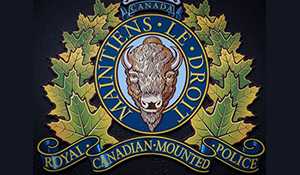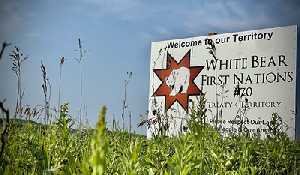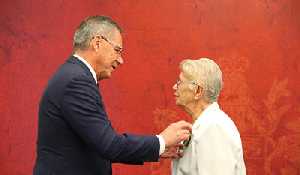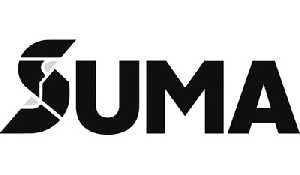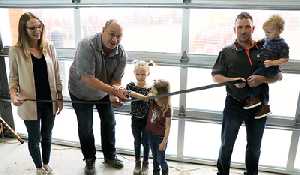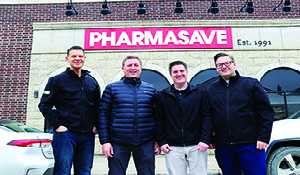Cenotaph replicas a fundraiser for centennial
March 18, 2024, 11:11 am
Kevin Weedmark
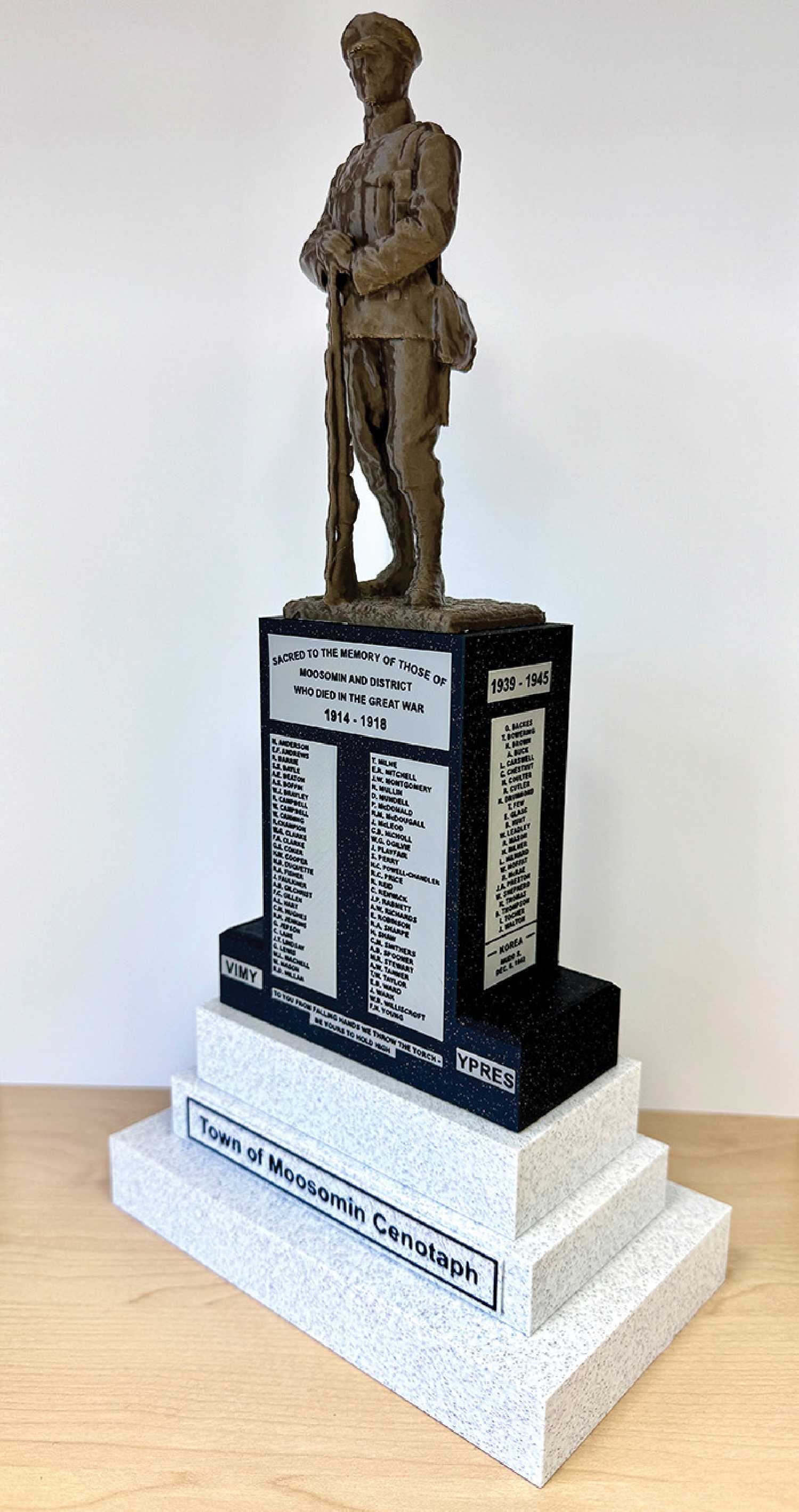

3D printed miniature replicas of Moosomin’s cenotaph are being sold by the Cenotaph 100 committee to raise money to help cover costs of the June 8 centennial celebration.
They are being sold for $100 each.
Brian Beckett of the Moosomin Legion and the Cenotaph 100 committee said he is happy with how the 3D printed replicas came out.
“I think it’s pretty amazing, myself,” he said.
The miniatures are being produced by Joe and Riley St. Onge on their 3D printer.
“We’ve got an order in right now with them for 10, but we can have them make as many as we get orders for,” says Beckett. “It’s pretty costly for them to do this. It takes pretty near a whole day for them to make one. So right now we’re getting them to make 10 and then we’ll take orders and they’ll make them as we go, then we’ll call the customers and say they’re ready or we’ll ship them out—whatever we need to do.”
Currently three have been made. One is at the World-Spectator office, one at the town office, and one at the Legion. People can take a look at the samples at those locations and order them if they want. There is an order form with the sample at the World-Spectator office, or people can order by emailing b.s.beckett@sasktel.net
Beckett says the group is hoping to raise up to $2,500 with the miniatures.
“If we were to sell 50 units, you know we’d be in that area of $2,000-$2,500 profit. It’s hard to tell how many people are going to be interested. Not everybody is going to look at it like me and go, ‘Whoa, that is amazing,’ but I think some people will see it and think it would be good to have and a good way to support the Cenotaph Centennial. It’s pretty amazing work when you think of it.”
Beckett says plans are going well for the celebration.
“I just heard from the pipe band and they’re coming. The only iffy part still is the PPCLI depending on whether they have maneuvers or anything like that, but they swear up and down that they’ll have someone here.”
Riley St Onge said a lot of work went into the design of the 13-inch miniatures.
“We started with pictures on the stature,” he said. “There are 3D apps on your phone that can do 3D scanning and that’s what we did for the statue. Once we had the measurements for these I just actually went to a CAD program and designed it that way.
“We used different nozzles. For finer detail you use a smaller nozzle size to get that level of detail for the text.”
Riley says he enjoys the design part of 3D printing the most.
“Designing it can be fun, but unfun at times, but it’s nice to sharpen your skills.
“The crazy part is it starts with an idea that’s just in your head and ends up being something real.”
“When the committee was starting to plan the 100th anniversary, this idea came up,” said Laurel St. Onge. “Of course I’m a member of the Legion, so we talked about it kind of at home and Joe was interested. Then Joe and Riley went and took pictures and started working on it.
“We had a selfie stick and we were on a ladder to get the 3D capture—360 degrees,” says Riley. “The 3D scanner would have you take like 200 hundred pictures all around it and then the app sends it off to their servers and they compile it and give you a 3D render of the photos basically.
“They had all the measurements and then next time we went to Rocanville where Riley is, he had this all designed,” says Laurel.
“There’s been a lot of iteration,” says Riley.
“There have been tweaks, a few tweaks, to make the belt stand out more and different things like that. His ears didn’t get captured on the first ones but my dad went into the program and fixed it up a bit.
“We went back a few times to get better captures of the statue and do more measurements.”
Riley says filaments are chosen based on the color of each piece of the product.
“You buy the filaments based on what you want. The base is a marble filament which came out perfect and the granite is a galaxy filament which does the granite look well enough.
“We print the marble base separately, the granite separately, the statue separately, and for the nameplates it does the gray and then the black on top, then we glue them into place.”
It takes 15-18 hours to create each replica.
Laurel St. Onge said she’s happy her family has been able to help with the Cenotaph centennial.
“I think they appreciate them, and it gives Riley and Joe some experience too and some practice. It’s kind of a win-win and it’s community—it’s local.”
